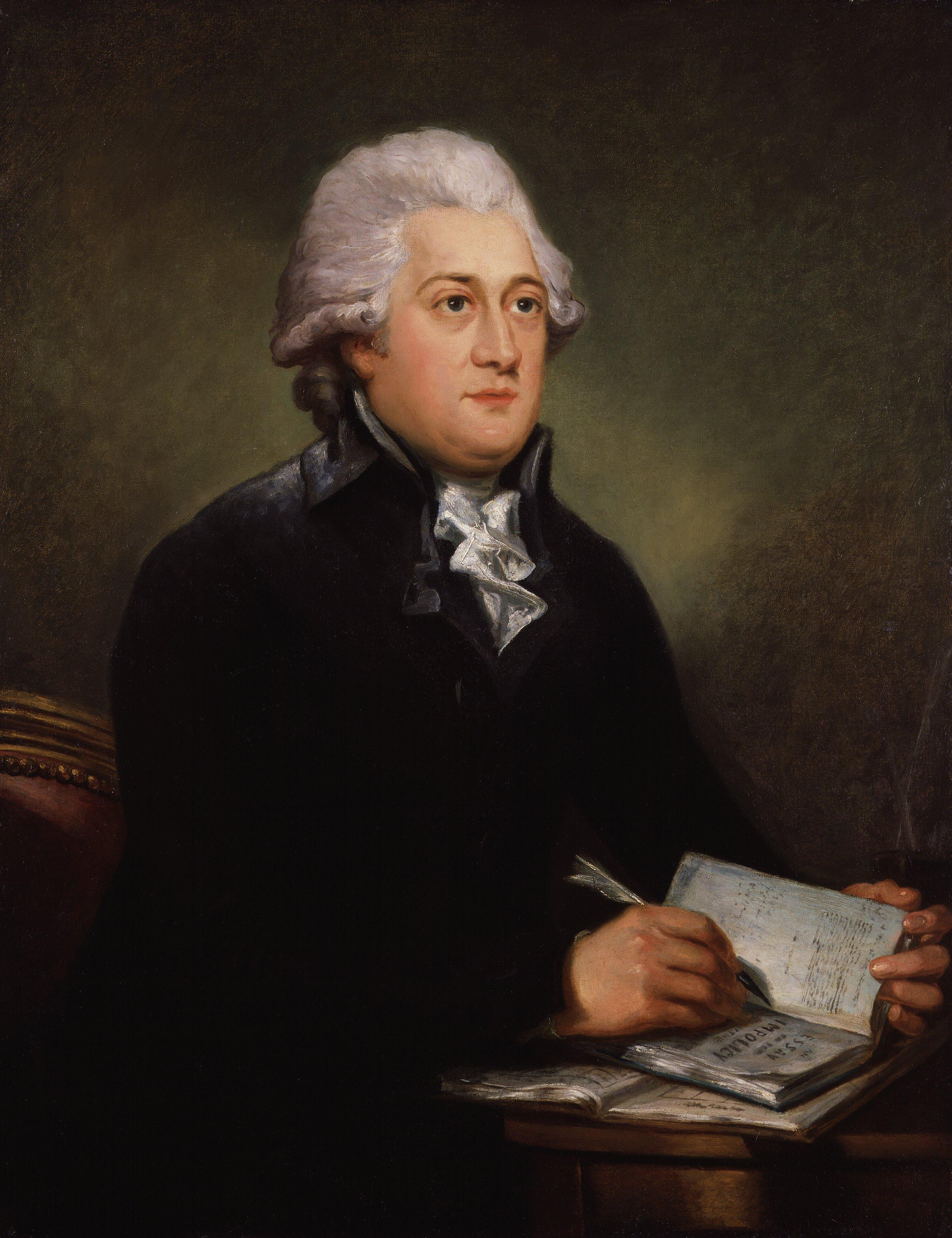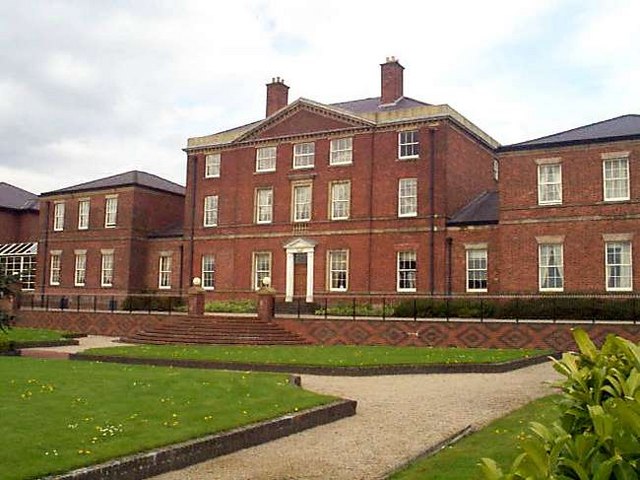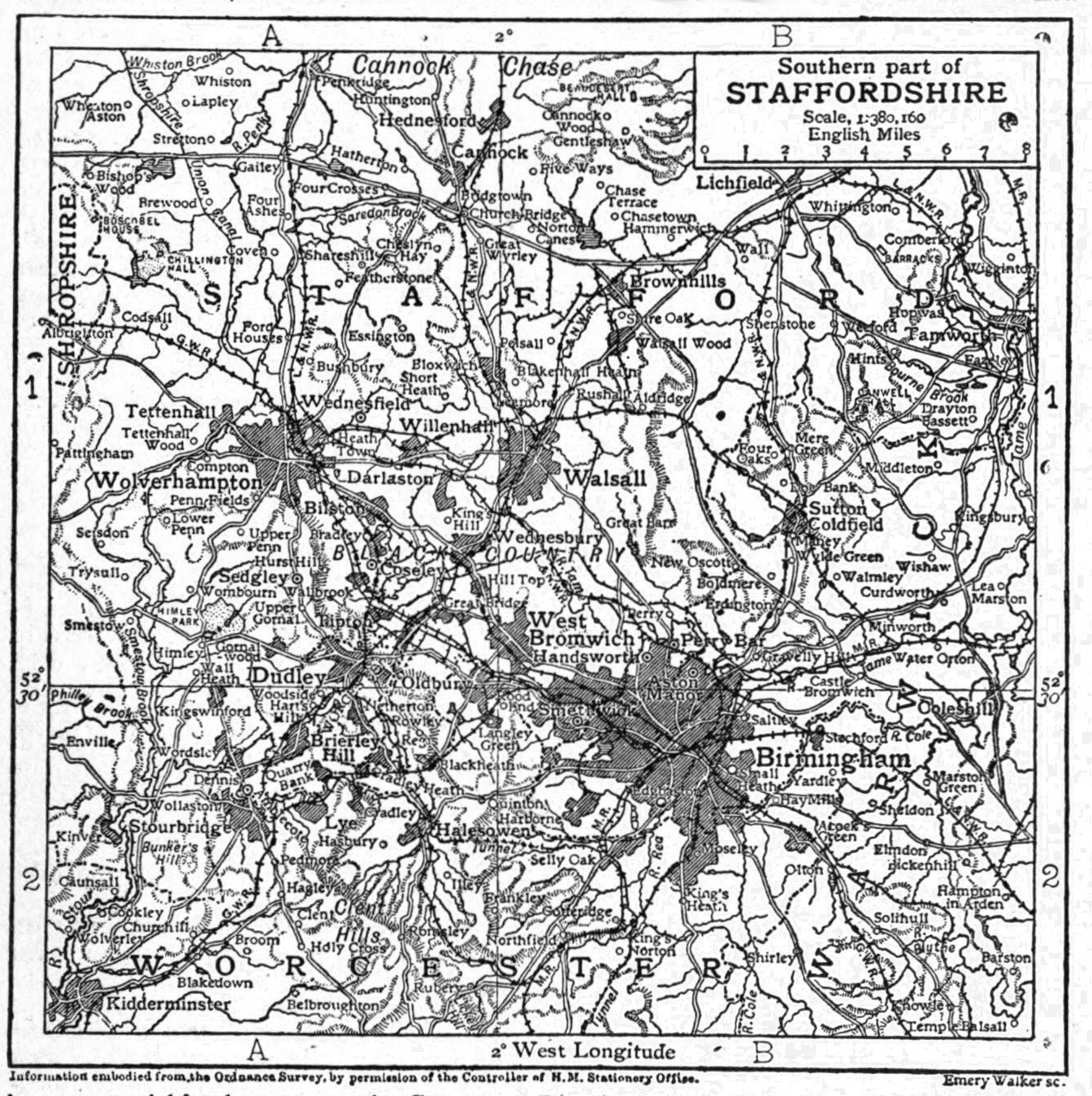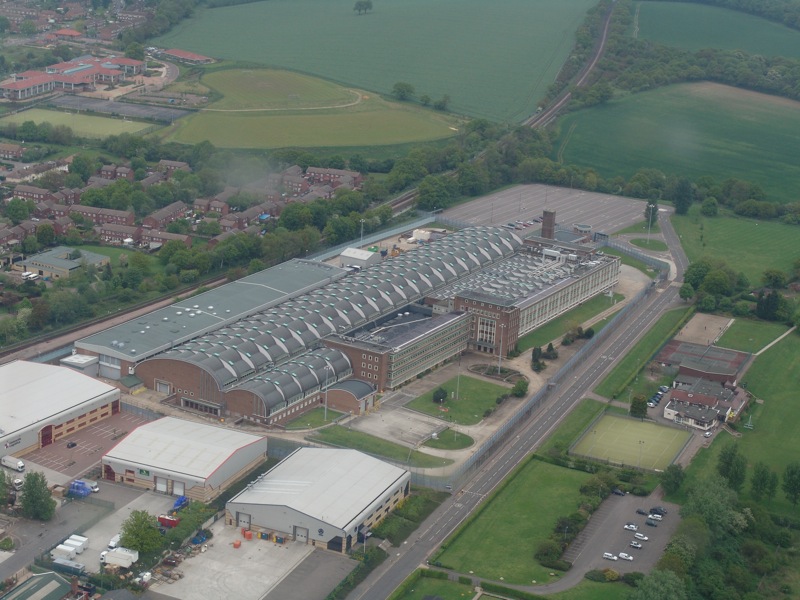|
Matthew Boulton
Matthew Boulton ( ; 3 September 172817 August 1809) was an English businessman, inventor, mechanical engineer, and silversmith. He was a business partner of the Scottish engineer James Watt. In the final quarter of the 18th century, the partnership installed hundreds of Boulton and Watt, Boulton & Watt steam engines, which were a great advance on the state of the art, making possible the mechanisation of factories and mills. Boulton applied modern techniques to the minting of coins, striking millions of pieces for Britain and other countries, and supplying the Royal Mint with up-to-date equipment. Born in Birmingham, he was the son of a Birmingham manufacturer of small metal products who died when Boulton was 31. By then Boulton had managed the business for several years, and thereafter expanded it considerably, consolidating operations at the Soho Manufactory, built by him near Birmingham. At Soho, he adopted the latest techniques, branching into silver plate, ormolu ("gilt ... [...More Info...] [...Related Items...] OR: [Wikipedia] [Google] [Baidu] |
Matthew Piers Watt Boulton
Matthew Piers Watt Boulton (22 September 1820 – 30 June 1894), also published under the pseudonym M. P. W. Bolton, was a British Classics, classicist, elected member of the UK's Metaphysical Society, an scientist, amateur scientist and an Invention, inventor, best known for his invention of the aileron, a primary Aeronautics, aeronautical Aircraft flight control system#Primary controls, flight control device. He patented the aileron in 1868, some 36 years before it was first employed in manned flight by Robert Esnault-Pelterie in 1904. Boulton was the son of Matthew Robinson Boulton, and as well the grandson of Matthew Boulton, who founded the Soho Manufactory and the Soho Mint. His grandfather also co-founded the Soho Foundry with James Watt, which employed steam engines of the latter's design. Born into a family of significant wealth and mea ... [...More Info...] [...Related Items...] OR: [Wikipedia] [Google] [Baidu] |
Carl Frederik Von Breda
Carl Frederik von Breda (16 August 1759 – 1 December 1818) was a Swedish painter who studied in and spent much of his career in Britain before becoming painter to the Swedish court. He was born in Stockholm in 1759, and moved to Britain where he was a student of Joshua Reynolds. Breda specialized in painting portraits and was called "the van Dyck of Sweden". He returned to Sweden 1796 where he became professor at the Academy of Arts, a popular portraitist, and a court painter. Breda married at age 22 and his son, Johan Fredrik, was also a painter, who studied under his father. Breda died in Stockholm in 1818. Early life Breda's great-grandfather Pieter emigrated to Stockholm around the year 1670 from the Netherlands. The "von Breda" family name seems to indicate a connection with the city of Breda. ''Von'' is not a Dutch preposition, but in the Nordic countries, this originally German preposition has occasionally been used as a part of names of ennobled families of native or ... [...More Info...] [...Related Items...] OR: [Wikipedia] [Google] [Baidu] |
Josiah Wedgwood
Josiah Wedgwood (12 July 1730 – 3 January 1795) was an English potter, entrepreneur and abolitionist. Founding the Wedgwood company in 1759, he developed improved pottery bodies by systematic experimentation, and was the leader in the industrialisation of the manufacture of European pottery. The renewed classical enthusiasms of the late 1760s and early 1770s were of major importance to his sales promotion. His expensive goods were in much demand from the upper classes, while he used emulation effects to market cheaper sets to the rest of society. Every new invention that Wedgwood produced – green glaze, creamware, black basalt, and jasperware – was quickly copied. Having once achieved efficiency in production, he obtained efficiencies in sales and distribution. His showrooms in London gave the public the chance to see his complete range of tableware. Wedgwood's company never made porcelain during his lifetime, but specialised in fine earthenwares and stonewares that ... [...More Info...] [...Related Items...] OR: [Wikipedia] [Google] [Baidu] |
West Bromwich
West Bromwich ( ), commonly known as West Brom, is a market town in the borough of Sandwell, in the county of the West Midlands (county), West Midlands, England. Historic counties of England, Historically part of Staffordshire, it is northwest of Birmingham. West Bromwich is part of the area known as the Black Country, in terms of geography, cultures and Black Country dialect, dialect. West Bromwich had a population of 103,112 in the 2021 United Kingdom census, 2021 Census. Initially a rural village, West Bromwich's growth corresponded with that of the Industrial Revolution, owing to the area's natural richness in ironstone and coal, as well as its proximity to canals and Rail transport, railway branches. It led to the town becoming a centre for Coal mining in the United Kingdom, coal mining, Brickworks, brick making, the iron industry and metal trades such as nails, springs and guns. The town's primary economy developed into the engineering, manufacturing and the Automotive i ... [...More Info...] [...Related Items...] OR: [Wikipedia] [Google] [Baidu] |
Smethwick
Smethwick () is an industrial town in the Sandwell district, in the county of the West Midlands (county), West Midlands, England. It lies west of Birmingham city centre. Historically it was in Staffordshire and then Worcestershire before being placed into West Midlands county. In 2019, the ward of Smethwick had an estimated population of 15,246, while the wider built-up area subdivision has a population of 53,653. History It was suggested that the name Smethwick meant "smiths' place of work", but a more recent interpretation has suggested the name means "the settlement on the smooth land". Smethwick was recorded in the Domesday Book as ''Smedeuuich'', the ''d'' in this spelling being the Anglo-Saxon letter eth. Until the end of the 18th century it was an outlying hamlet of the south Staffordshire village of Harborne. Harborne became part of the county borough of Birmingham and thus transferred from Staffordshire to Warwickshire in 1891, leaving Smethwick in the County of ... [...More Info...] [...Related Items...] OR: [Wikipedia] [Google] [Baidu] |
Black Country
The Black Country is an area of England's West Midlands. It is mainly urban, covering most of the Dudley and Sandwell metropolitan boroughs, with the Metropolitan Borough of Walsall and the City of Wolverhampton. The road between Wolverhampton and Birmingham was described as "one continuous town" in 1785. The area was one of the Industrial Revolution's birthplaces. Its name was first recorded in the 1840s, and derives either from the thick coal seam close to the surface or the production of coal, coke, iron, glass, bricks and steel which produced high levels of soot and air pollution. Extent The Black Country has no single set of defined boundaries. Some traditionalists define it as "the area where the coal seam comes to the surface – so West Bromwich, Coseley, Oldbury, Blackheath, Cradley Heath, Old Hill, Bilston, Dudley, Tipton, Wednesbury, and parts of Halesowen, Walsall and Smethwick or what used to be known as Warley." There are records from the 18th century ... [...More Info...] [...Related Items...] OR: [Wikipedia] [Google] [Baidu] |
Staffordshire
Staffordshire (; postal abbreviation ''Staffs''.) is a Ceremonial counties of England, ceremonial county in the West Midlands (region), West Midlands of England. It borders Cheshire to the north-west, Derbyshire and Leicestershire to the east, Warwickshire to the south-east, the West Midlands (county), West Midlands county and Worcestershire to the south, and Shropshire to the west. The largest settlement is the city of Stoke-on-Trent. The county has an area of and a population of 1,131,052. Stoke-on-Trent is located in the north and is immediately adjacent to the town of Newcastle-under-Lyme. Stafford is in the centre of the county, Burton upon Trent in the east, and the city of Lichfield and Tamworth, Staffordshire, Tamworth in the south-east. For local government purposes Staffordshire comprises a non-metropolitan county, with nine districts, and the Unitary authorities of England, unitary authority area of Stoke-on-Trent. The county Historic counties of England, historical ... [...More Info...] [...Related Items...] OR: [Wikipedia] [Google] [Baidu] |
Warwickshire
Warwickshire (; abbreviated Warks) is a Ceremonial counties of England, ceremonial county in the West Midlands (region), West Midlands of England. It is bordered by Staffordshire and Leicestershire to the north, Northamptonshire to the east, Oxfordshire and Gloucestershire to the south, and Worcestershire and the West Midlands (county), West Midlands county to the west. The largest settlement is Nuneaton and the county town is Warwick. The county is largely rural; it has an area of and a population of 571,010. After Nuneaton (88,813), the largest settlements are Rugby, Warwickshire, Rugby (78,125), Leamington Spa (50,923), Warwick (36,665), Bedworth (31,090) and Stratford-upon-Avon (30,495). For Local government in England, local government purposes, Warwickshire is a non-metropolitan county with five districts. The county Historic counties of England, historically included the city of Coventry and the area to its west, including Royal Town of Sutton Coldfield, Sutton Coldfield ... [...More Info...] [...Related Items...] OR: [Wikipedia] [Google] [Baidu] |
Coke (fuel)
Coke is a grey, hard, and porous coal-based fuel with a high carbon content. It is made by heating coal or petroleum in the absence of air. Coke is an important industrial product, used mainly in iron ore smelting, but also as a fuel in stoves and forges. The unqualified term "coke" usually refers to the product derived from low-ash and low-sulphur bituminous coal by a process called coking. A similar product called petroleum coke, or pet coke, is obtained from crude petroleum in oil refinery, petroleum refineries. Coke may also be formed naturally by geology, geologic processes.B. Kwiecińska and H. I. Petersen (2004): "Graphite, semi-graphite, natural coke, and natural char classification — ICCP system". ''International Journal of Coal Geology'', volume 57, issue 2, pages 99-116. It is the residue of a destructive distillation process. Production Industrial coke furnaces The industrial production of coke from coal is called coking. The coal is baked in an airless k ... [...More Info...] [...Related Items...] OR: [Wikipedia] [Google] [Baidu] |
Matthew Boulton Blue Plaque Birthplace Birmingham
Matthew may refer to: * Matthew (given name) * Matthew (surname) * ''Matthew'' (album), a 2000 album by rapper Kool Keith * Matthew (elm cultivar), a cultivar of the Chinese Elm ''Ulmus parvifolia'' Christianity * Matthew the Apostle, one of the apostles of Jesus * Gospel of Matthew, a book of the Bible Ships * ''Matthew'' (1497 ship), the ship sailed by John Cabot in 1497, with two 1990s replicas * MV ''Matthew I'', a suspected drug-runner scuttled in 2013 * Interdiction of MV ''Matthew'', a 2023 operation of the Irish military against a 2001 Panamanian cargo ship See also * Matt (given name), the diminutive form of Matthew * Mathew, alternative spelling of Matthew * Matthews (other) * Matthew effect The Matthew effect, sometimes called the Matthew principle or cumulative advantage, is the tendency of individuals to accrue social or economic success in proportion to their initial level of popularity, friends, and wealth. It is sometimes summar ... * Tropic ... [...More Info...] [...Related Items...] OR: [Wikipedia] [Google] [Baidu] |
Banknotes Of The Pound Sterling
The pound sterling (symbol: Pound sign, £; ISO 4217 currency code: GBP) is the official currency of the United Kingdom, Jersey, Guernsey, the Isle of Man, British Antarctic Territory, South Georgia and the South Sandwich Islands, and Tristan da Cunha. The Bank of England has a legal monopoly of banknote issuance in England and Wales. Six other banks (Banknotes of Scotland, three in Scotland and Banknotes of Northern Ireland, three in Northern Ireland) also issue their own banknotes as provisioned by the Banking Act 2009, but the law requires that the issuing banks hold a sum of Bank of England note issues, Bank of England banknotes (or gold) equivalent to the total value of notes issued. Versions of the pound sterling issued by Crown dependencies and other areas are regulated by their local governments and not by the Bank of England. Four British Overseas Territories (Gibraltar, Saint Helena, Ascension Island and the Falkland Islands) also have currencies called pounds which ... [...More Info...] [...Related Items...] OR: [Wikipedia] [Google] [Baidu] |
Decimal Day
Decimal Day () in the United Kingdom and in Republic of Ireland, Ireland was Monday 15 February 1971, the day on which each country decimalised its respective £sd currency of pound sterling, pounds, Shilling (British coin), shillings, and penny, pence. Before this date, both the British pound sterling and the Irish pound (symbol "£") were subdivided into 20 shillings, each of 12 (old) pence, a total of 240 pence. With decimalisation, the pound kept its old value and name in each currency, but the shilling was abolished, and the pound was divided into 100 new pence (abbreviated to "p"). In the UK, the new coins initially featured the word “new”, but in due course this was dropped. Each new penny was worth 2.4 old pence ("d.") in each currency. Coins of half a new penny were introduced halfpenny (British decimal coin) , in the UK and Halfpenny (Irish decimal coin), in Ireland to maintain the approximate granularity of the old penny, but these were dropped in the UK in ... [...More Info...] [...Related Items...] OR: [Wikipedia] [Google] [Baidu] |








